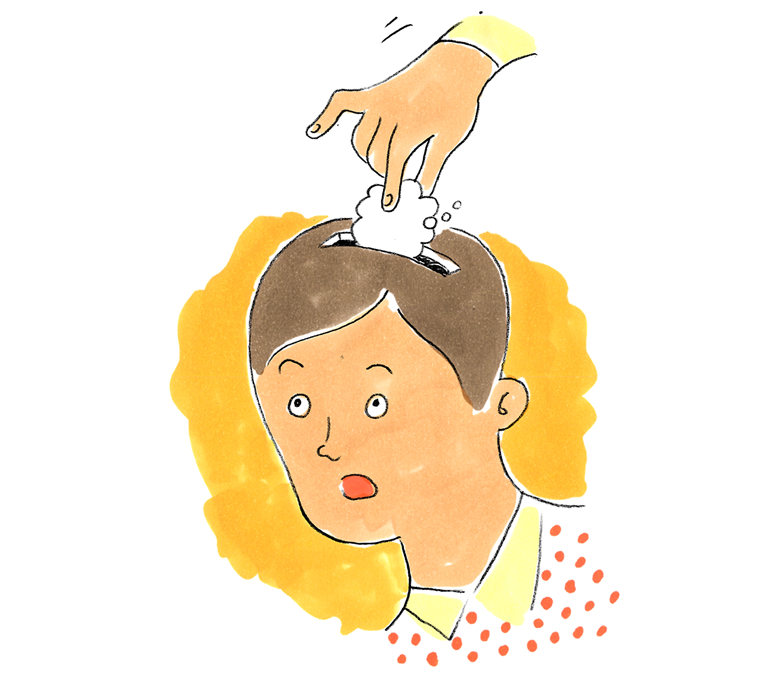■Innovation begins with the imagination that says, "Wouldn't it be nice if..."
One book that influenced me was They Dreamed of the Year 2000 (Shinchosha).
Published in December 1999, it came out when the world was buzzing with excitement about the "Millennium!" This book is an illustration collection featuring artists active from the late 19th to early 20th century, depicting their visions of the future. It's packed with the "wouldn't it be nice if..." ideas people imagined back then.
Even 100 years later, the energy of that era's longing for the future still shines through. Turning its pages fills you with a sense of optimism. It teaches us that inventions, discoveries, and innovations all begin with the imagination of people who think, "Wouldn't it be nice if...?"
Here, let's introduce two examples where "wishful thinking" became reality.
First, the "HERE balloon" initiative implemented in South Korea around 2012.
In the capital city of Seoul, car usage is high, leading to chronic congestion, wasted gasoline, and a shortage of parking spaces. It was found that drivers spend an average of about 500 meters per car daily just searching for parking.
In flat, expansive parking lots, it's hard to see where spaces are free, leading to aimless driving. The idea conceived was to "float helium balloons behind parking spaces." The simple mechanism: when a space is free, a balloon with an arrow pointing to "HERE" floats up. When a car parks there, the balloon's string gets pulled by the vehicle and sinks lower.
This eliminates the need for cars to drive around unnecessarily. It turned the common wish—"Wouldn't it be great if something showed available parking spaces from a distance?"—into reality.
Another example is the "LA's new People St" program in Los Angeles, USA, which also began around 2012.
"I want to take a quick break, but cafes and restaurants are all crowded and hard to get into. It would be great if there were benches around town where I could rest." This program was created to realize that wish, allowing people to install handmade benches on public sidewalks.
The system is simple. Once a proposal submitted online to city officials gets approved, a designated DIY kit is sent. By assembling it, you can create a small rest area on a section of the sidewalk. By simplifying the previously cumbersome bureaucratic procedures, they made it easy for any citizen to participate. This, too, is a realization of people's "wouldn't it be nice if..." wishes.
While such examples exist, if we reflect on our daily lives, we often find ourselves thinking "Wouldn't it be nice if there were something like this" when faced with a problem, only to give up with "Oh well" or "It's impossible anyway" and quickly forget about it.
■What matters is feeling joy or frustration
That's why I make a point of not just thinking about things when I'm in trouble, but also keeping an eye out for "Is there something missing?" in everyday situations. When I find something I wish existed, I store it in my heart.
Of course, the reality is that even if I store these ideas, I often can't bring them to life myself. However, even so, it's important to be able to react when someone else makes it happen – feeling happy that "someone else thought the same thing," or feeling frustrated that "they beat me to it." If I hadn't stored these ideas, I wouldn't even notice such things and would just let them pass me by.
By doing this consistently in daily life, when you actually need to come up with ideas or plans, you can tap into that imagination: "Wouldn't it be great if there was something like this?" or "Wouldn't it be cool if we could do that?"
One of my "wouldn't it be nice if..." ideas that actually took shape is the iPhone app "Sky Canvas." It came from remembering a childhood daydream: "Wouldn't it be fun to turn the sky into a canvas and draw a big picture?"
This app lets you go outside, point your iPhone upward, launch the camera, and play by floating various animals drawn from cloud fragments onto the sky displayed on your screen. You can move it 360 degrees left, right, up, and down, turning the vast sky into your canvas and creating your own personal zoo. You can save your creations, and anytime, anywhere, just point your device at the sky, and the animals you floated will appear in the same spot.
While not yet realized, I've turned many of these saved "wouldn't it be nice if..." ideas into proposals, like "I wish we could turn corporate mascots into real robots and fully commercialize them" or "I wish we could illuminate sidewalks as the Milky Way and walk on it."
If you keep wishing "I wish this existed," opportunities for it to become reality will surely expand. That's why I don't give up on proposals that didn't get realized; I just keep storing them away.
By the way, what are your "wouldn't it be nice if..." ideas?
Well, this series I've been running since late last year comes to an end with this installment. Thank you so much for all the feedback over the past six months. Using that as motivation to find topics for my articles became a new kind of 'mental fitness training' for me. I hope to share the skills and know-how I've developed through opportunities like this again someday. I look forward to that time...




